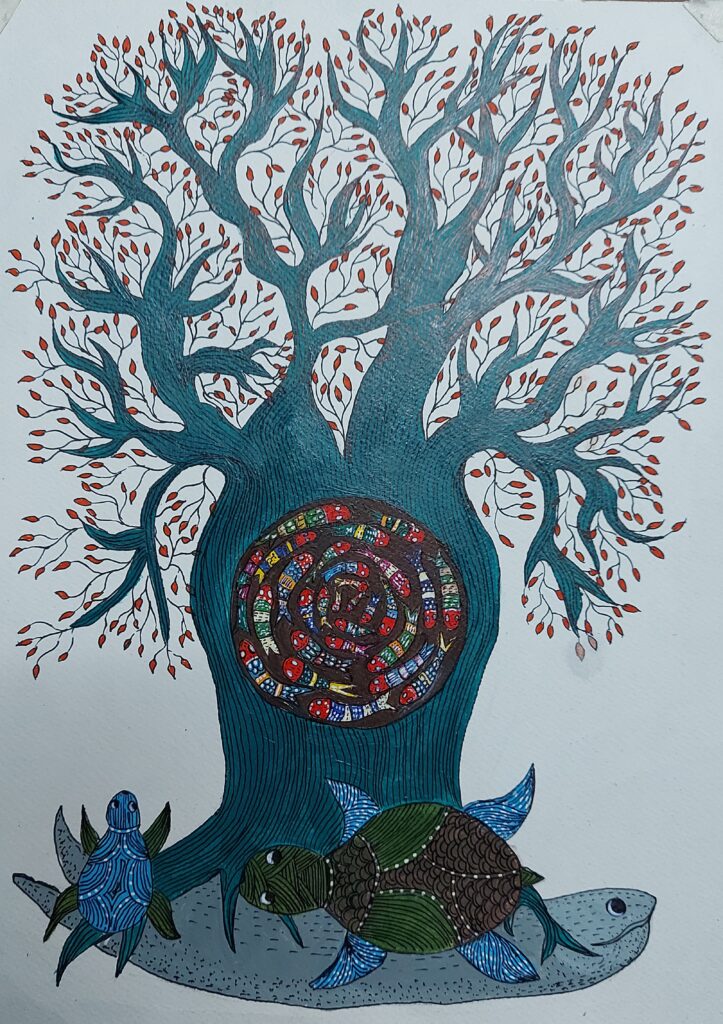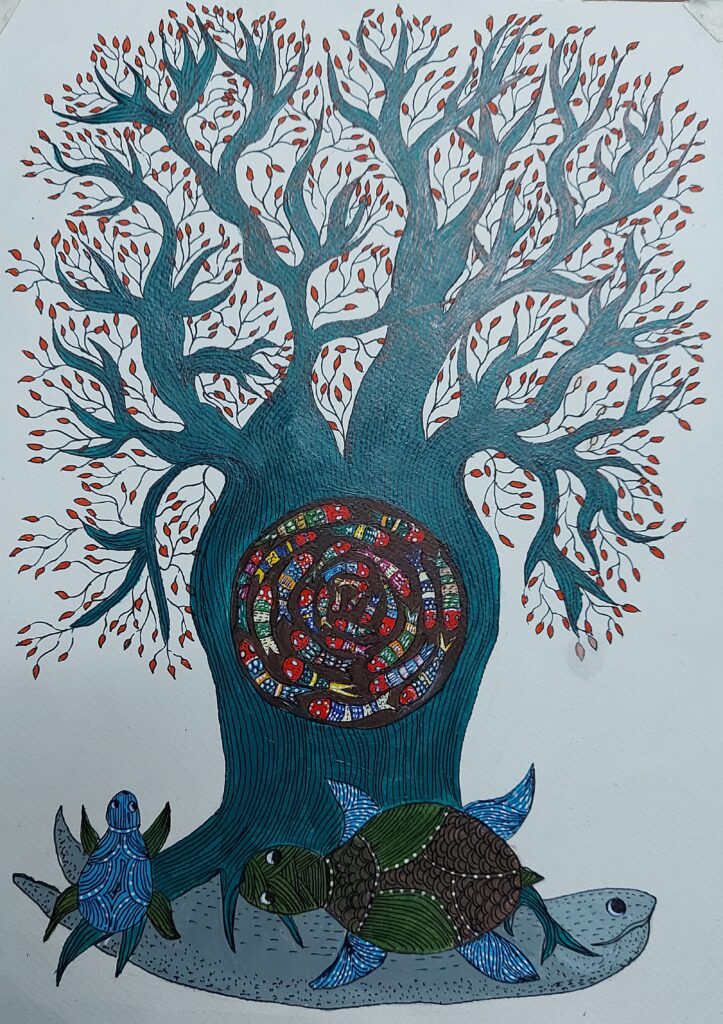
Hey friends! Welcome to the amazing world of Gond Art, a mesmerizing Indian folk art that is full of vibrant colors and rich cultural heritage. This ancient tradition originated from the tribal communities of Central India, particularly the Gondi tribes of Madhya Pradesh. It celebrates nature, folklore, and spirituality, and in this blog, we will take you on a journey to explore the beauty and intricacies of Gond Art, uncovering its history, techniques, and significance in the modern world.
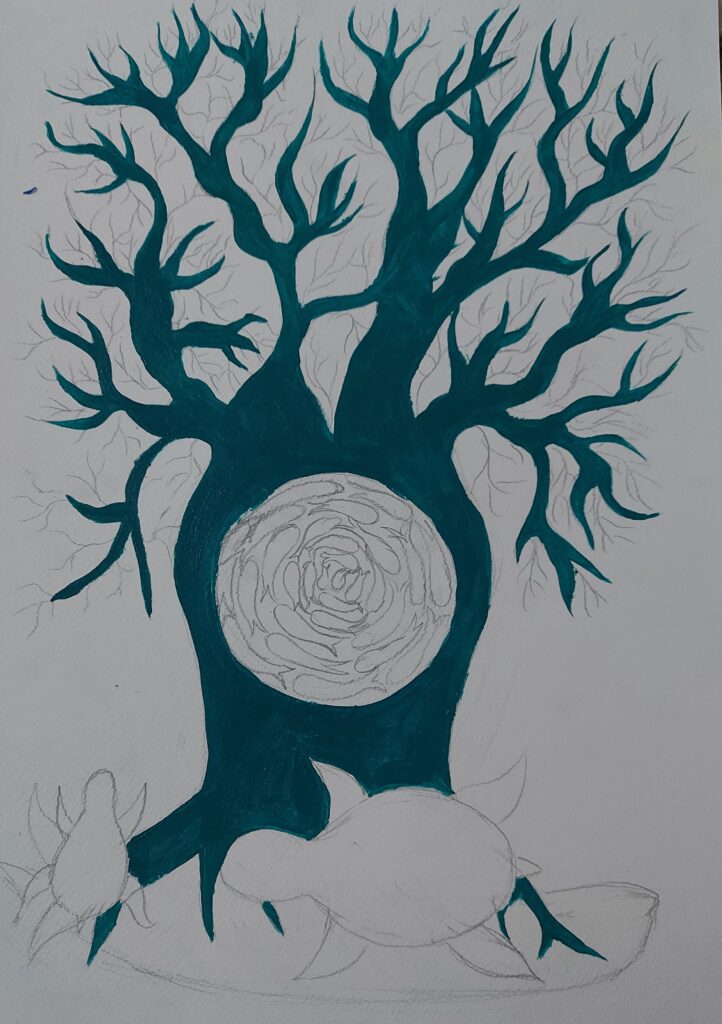
- The Origins and History of Gond Art:
Gond Art is deeply rooted in the ancient culture and traditions of the Gondi tribes, who have been creating intricate art forms for centuries. These tribal communities used to decorate their homes with vibrant murals and paintings that depicted scenes from everyday life, mythology, and rituals. Over time, these artistic expressions evolved into what we now know as Gond Art, characterized by its signature motifs, bold lines, and vibrant colors.
- Techniques and Characteristics:
Gond Art is a unique blend of tradition and innovation, using simple tools and natural materials to create intricate masterpieces. Gond artists typically use fine lines and dots to create elaborate patterns, often depicting animals, birds, trees, and mythological figures. The use of bold and contrasting colors adds depth and vibrancy to their creations, capturing the essence of tribal life and folklore.
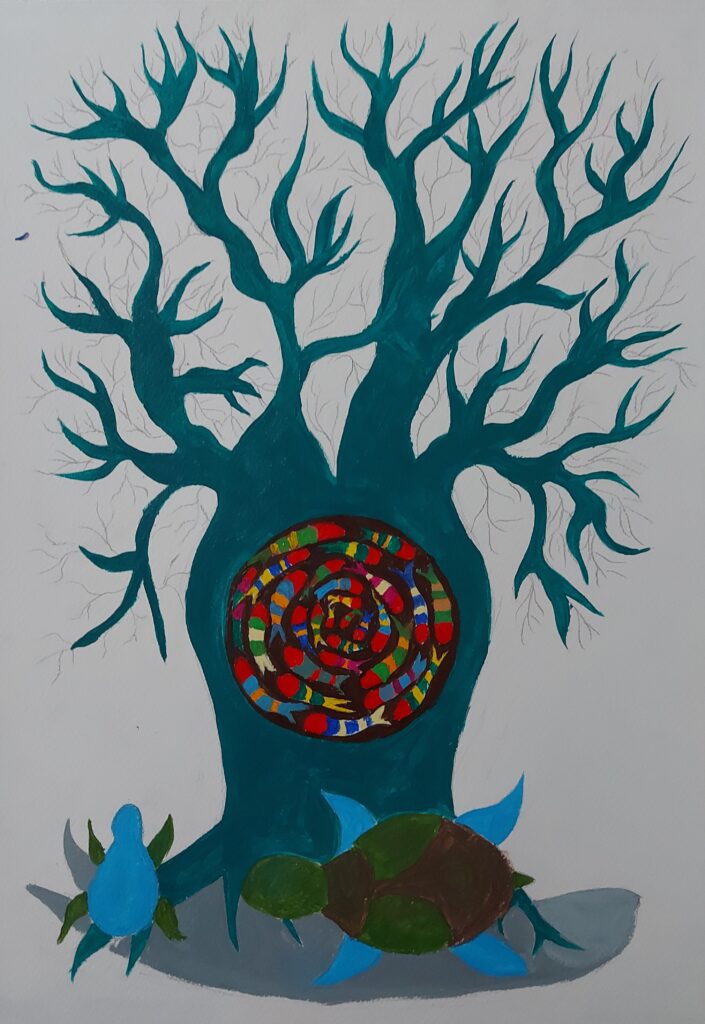
- Themes and Symbolism:
Gond Art is deeply rooted in the cultural and spiritual beliefs of the Gondi tribes, with each painting telling a story or conveying a message. Common themes include the interconnectedness of humans with nature, the cycle of life and death, and the importance of community and harmony. Animals such as tigers, elephants, and birds are often depicted, symbolizing power, wisdom, and freedom, while geometric patterns represent the cosmic order and balance.
- Contemporary Revival and Recognition:
In recent years, Gond Art has gained widespread recognition both in India and on the global stage, thanks to the efforts of contemporary artists and cultural enthusiasts. Organizations and initiatives aimed at preserving and promoting indigenous art forms have played a crucial role in reviving interest in Gond Art, fostering collaboration between traditional artists and modern designers. Today, Gond Art can be seen not only on the walls of tribal homes but also in galleries, museums, and public spaces, serving as a testament to the enduring legacy of India’s folk heritage.
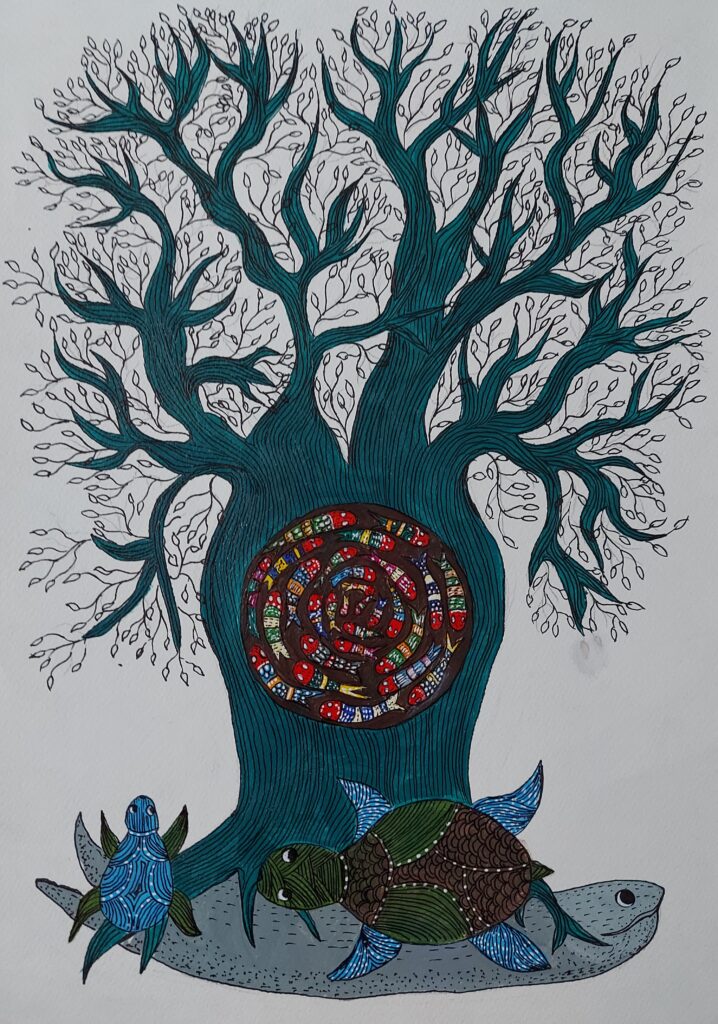
- Conclusion:
We hope that you enjoyed our exploration of Gond Art and that you are as awestruck as we are by the sheer beauty and depth of this ancient tradition. From its humble beginnings in the heart of tribal India to its current status as a global cultural phenomenon, Gond Art continues to inspire and captivate audiences around the world. As we celebrate the rich tapestry of Indian folk art, let us also strive to preserve and honor the legacy of the Gondi tribes, ensuring that their stories and traditions endure for generations to come.
